-
EXECUTIVE SUMMARY 25
-
MARKET INTRODUCTION 27
-
DEFINITION 27
-
SCOPE OF THE STUDY 27
-
RESEARCH OBJECTIVE 27
-
MARKET STRUCTURE 28
-
RESEARCH METHODOLOGY 29
-
OVERVIEW 29
-
DATA FLOW 31
- Data Mining Process 31
-
PURCHASED DATABASE: 32
-
SECONDARY SOURCES: 33
- Secondary Research data flow: 34
-
PRIMARY RESEARCH: 35
- Primary Research DATA FLOW: 36
- Primary Research: Number of Interviews conducted 37
-
APPROACHES FOR MARKET SIZE ESTIMATION: 38
- Revenue Analysis Approach 38
-
DATA FORECASTING 39
- Data forecasting Technique 39
-
DATA MODELING 40
- microeconomic factor analysis: 40
- Data modeling: 41
-
TEAMS AND ANALYST CONTRIBUTION 43
-
MARKET DYNAMICS 45
-
INTRODUCTION 45
-
DRIVERS 46
- Increase in awareness about passenger and vehicle safety 46
- Growing inclination toward enhanced in-vehicle experience 46
- Booming demand for connected vehicle 47
- Surge in demand for luxury and high-end cars 47
- Increased Adoption Rate of Windshield HUD 48
-
RESTRAINT 49
- Space constraints in automotive cockpits 49
- Technical Complexity and Development Challenges 49
-
OPPORTUNITY 51
- Increasing demand for semi-autonomous vehicles 51
- Growing utilization of head-up displays in electric vehicles 51
- Thriving investments in automotive head-up displays 52
-
CHALLENGS 53
- Optical Challenges in head-up display systems 53
- High Cost of Advanced HUD Systems 53
-
MARKET & TECHNOLOGY TRENDS 54
- Motorcycle Windshild HUDs 54
- Augmented Reality HUDs 54
- Transparent Head-Up Displays (HUDs) 54
-
COVID IMPACT ANALYSIS 56
- Impact of Automotive Industry 56
- Impact on Automotive HUD Market 56
- Impact on Supply Chain 56
- Impact on YoY growth 2020-22 56
-
MARKET FACTOR ANALYSIS 57
-
SUPPLY CHAIN ANALYSIS 57
- Raw Material and Components: 57
- Component Manufacturing: 57
- Integration and Assembly: 58
- Aftermarket Support: 58
- End Users: 58
-
PORTER'S FIVE FORCES MODEL 59
- Threat of New Entrants (Moderate): 60
- Bargaining Power of Suppliers (Low): 60
- Bargaining Power of Buyers (Moderate): 60
- Threat of Substitute Products (Low): 60
- Rivalry among Existing Competitors (High): 60
-
MARKET SWOT ANALYSIS 61
-
MARKET PESTEL ANALYSIS 61
- political: 61
- economic: 61
- social: 62
- technological: 62
- environmental: 62
- legal: 62
-
GLOBAL AUTOMOTIVE HEAD-UP DISPLAY (HUD) MARKET, BY HUD TYPE 64
-
INTRODUCTION 64
-
COMBINER HUD 65
-
WINDSHIELD HUD 65
-
AUGMENTED REALITY HUD 65
-
GLOBAL AUTOMOTIVE HEAD-UP DISPLAY (HUD) MARKET, BY DIMENSION TYPE 66
-
OVERVIEW 66
-
2D-HUD 67
-
3D-HUD 67
-
GLOBAL AUTOMOTIVE HEAD-UP DISPLAY (HUD) MARKET, BY PASSENGER CAR 68
-
OVERVIEW 68
-
ECONOMIC CARS 69
-
MID-SEGMENT CARS 69
-
LUXURY CARS 69
-
GLOBAL AUTOMOTIVE HEAD-UP DISPLAY (HUD) MARKET, BY VEHICLE TYPE 70
-
OVERVIEW 70
-
PASSENGER CARS 71
-
COMMERCIAL VEHICLE 71
-
GLOBAL AUTOMOTIVE HEAD-UP DISPLAY (HUD) MARKET, BY PROPULSION TYPE 72
-
OVERVIEW 72
-
ICE 73
-
ELECTRIC 73
-
GLOBAL AUTOMOTIVE HEAD-UP DISPLAY (HUD) MARKET, BY ELECTRIC VEHICLE TYPE 74
-
OVERVIEW 74
-
BEVS 75
-
PHEVS 75
-
HEVS 75
-
FCEVS 75
-
GLOBAL AUTOMOTIVE HEAD-UP DISPLAY (HUD) MARKET, BY LEVEL OF AUTONOMY 76
-
OVERVIEW 76
-
NON-AUTONOMOUS CARS 77
-
SEMI-AUTONOMOUS CARS 77
-
AUTONOMOUS CARS 77
-
GLOBAL AUTOMOTIVE HEAD-UP DISPLAY (HUD) MARKET, BY SALES CHANNEL 78
-
OVERVIEW 78
-
OE FITTED 79
-
AFTERMARKET 79
-
GLOBAL AUTOMOTIVE HEAD-UP DISPLAY (HUD) MARKET, BY OFFERING 80
-
OVERVIEW 80
-
SOFTWARE 81
-
HARDWARE 81
-
GLOBAL AUTOMOTIVE HEAD-UP DISPLAY (HUD) MARKET, BY REGION 82
-
OVERVIEW 82
-
NORTH AMERICA 84
- US 87
- CANADA 90
- MEXICO 93
-
EUROPE 96
- GERMANY 100
- FRANCE 103
- UK 106
- ITALY 109
- SPAIN 112
- POLAND 114
- THE NETHERLANDS 117
- AUSTRIA 120
- SWITZERLAND 123
- REST OF EUROPE 126
-
ASIA-PACIFIC 129
- CHINA 134
- JAPAN 137
- INDIA 139
- SOUTH KOREA 142
- THAILAND 145
- INDONESIA 147
- SINGAPORE 150
- VIETNAM 153
- AUSTRALIA 156
- REST OF ASIA-PACIFIC 159
-
MIDDLE EAST & AFRICA 161
- SAUDI ARABIA 166
- UAE 168
- SOUTH AFRICA 171
- REST OF MEA 174
-
SOUTH AMERICA 177
- BRAZIL 181
- ARGENTINA 183
- REST OF SOUTH AMERICA 186
-
COMPETITIVE LANDSCAPE 190
-
INTRODUCTION 190
-
COMPETITOR DASHBOARD 191
-
COMPANY MARKET SHARE ANALYSIS, 2023 192
-
KEY DEVELOPMENTS & GROWTH STRATEGIES 193
- New Product launch/ Development 193
- Partnership/Collaboration, Investment, Expansion, and Others 193
-
COMPANY PROFILES 194
-
NIPPON SEIKI CO., LTD. 194
- COMPANY OVERVIEW 194
- FINANCIAL OVERVIEW 195
- PRODUCTS OFFERed 196
- KEY DEVELOPMENTS 196
- SWOT ANALYSIS 196
- Key Strategies: 197
-
CONTINENTAL AG 198
- COMPANY OVERVIEW 198
- FINANCIAL OVERVIEW 199
- PRODUCTS OFFERed 199
- KEY DEVELOPMENTS 199
- SWOT ANALYSIS 200
- Key Strategies 200
-
PANASONIC CORPORATION. 201
- COMPANY OVERVIEW 201
- FINANCIAL OVERVIEW 202
- PRODUCTS OFFERed 203
- KEY DEVELOPMENTS 203
- SWOT ANALYSIS 203
- Key Strategies 204
-
DENSO CORPORATION. 205
- COMPANY OVERVIEW 205
- FINANCIAL OVERVIEW 206
- PRODUCTS OFFERed 207
- KEY DEVELOPMENTS 207
- SWOT ANALYSIS 207
- Key Strategies 208
-
YAZAKI CORPORATION 209
- COMPANY OVERVIEW 209
- FINANCIAL OVERVIEW 209
- PRODUCTS OFFERed 209
- KEY DEVELOPMENTS 209
- SWOT ANALYSIS 209
- Key Strategies 210
-
VISTEON CORPORATION. 211
- COMPANY OVERVIEW 211
- FINANCIAL OVERVIEW 212
- PRODUCTS OFFERed 213
- KEY DEVELOPMENTS 213
- SWOT ANALYSIS 213
- Key Strategies: 214
-
HUAWEI TECHNOLOGIES CO., LTD. 215
- COMPANY OVERVIEW 215
- FINANCIAL OVERVIEW 216
- PRODUCTS OFFERed 217
- KEY DEVELOPMENTS 217
- SWOT ANALYSIS 217
- Key Strategies: 218
-
VALEO 219
- COMPANY OVERVIEW 219
- FINANCIAL OVERVIEW 220
- PRODUCTS OFFERed 221
- KEY DEVELOPMENTS 221
- SWOT ANALYSIS 221
- Key Strategies: 221
-
HARMAN INTERNATIONAL. 223
- COMPANY OVERVIEW 223
- FINANCIAL OVERVIEW 224
- PRODUCTS OFFERed 225
- KEY DEVELOPMENTS 225
- SWOT ANALYSIS 226
- Key Strategies: 226
-
HUDLY 227
- COMPANY OVERVIEW 227
- FINANCIAL OVERVIEW 227
- PRODUCTS OFFERed 227
- KEY DEVELOPMENTS 227
- SWOT ANALYSIS 227
-
LG ELECTRONICS 228
- COMPANY OVERVIEW 228
- FINANCIAL OVERVIEW 229
- PRODUCTS OFFERed 230
- KEY DEVELOPMENTS 230
- SWOT ANALYSIS 230
- Key Strategies: 230
-
WAYRAY AG. 232
- COMPANY OVERVIEW 232
- FINANCIAL OVERVIEW 232
- PRODUCTS OFFERed 232
- KEY DEVELOPMENTS 232
- SWOT ANALYSIS 233
- Key Strategies: 233
-
-
LIST OF TABLES
-
MESSAGES FROM THE MANAGEMENT: 3
-
GLOBAL AUTOMOTIVE HEAD-UP DISPLAY (HUD) MARKET, BY HUD TYPE, 2019-2032 (USD MILLION) 64
-
GLOBAL AUTOMOTIVE HEAD-UP DISPLAY (HUD) MARKET, BY DIMENSION TYPE, 2019-2032 (USD MILLION) 66
-
GLOBAL AUTOMOTIVE HEAD-UP DISPLAY (HUD) MARKET, BY PASSENGER CAR, 2019-2032 (USD MILLION) 68
-
GLOBAL AUTOMOTIVE HEAD-UP DISPLAY (HUD) MARKET, BY VEHICLE TYPE, 2019-2032 (USD MILLION) 70
-
GLOBAL AUTOMOTIVE HEAD-UP DISPLAY (HUD) MARKET, BY PROPULSION TYPE, 2019-2032 (USD MILLION) 72
-
GLOBAL AUTOMOTIVE HEAD-UP DISPLAY (HUD) MARKET, BY ELECTRIC VEHICLE TYPE, 2019-2032 (USD MILLION) 74
-
GLOBAL AUTOMOTIVE HEAD-UP DISPLAY (HUD) MARKET, BY LEVEL OF AUTONOMY, 2019-2032 (USD MILLION) 76
-
GLOBAL AUTOMOTIVE HEAD-UP DISPLAY (HUD) MARKET, BY SALES CHANNEL, 2019-2032 (USD MILLION) 78
-
GLOBAL AUTOMOTIVE HEAD-UP DISPLAY (HUD) MARKET, BY OFFERING, 2019-2032 (USD MILLION) 80
-
GLOBAL AUTOMOTIVE HEAD-UP DISPLAY (HUD) MARKET, BY REGION, 2019–2032 (USD MILLION) 82
-
NORTH AMERICA: AUTOMOTIVE HEAD-UP DISPLAY (HUD) MARKET, BY COUNTRY, 2019-2032 (USD MILLION) 85
-
NORTH AMERICA AUTOMOTIVE HEAD-UP DISPLAY (HUD) MARKET, BY HUD TYPE, 2019-2032 (USD MILLION) 85
-
NORTH AMERICA AUTOMOTIVE HEAD-UP DISPLAY (HUD) MARKET, BY DIMENSION TYPE, 2019-2032 (USD MILLION) 85
-
NORTH AMERICA AUTOMOTIVE HEAD-UP DISPLAY (HUD) MARKET, BY PASSENGER CAR, 2019-2032 (USD MILLION) 86
-
NORTH AMERICA AUTOMOTIVE HEAD-UP DISPLAY (HUD) MARKET, BY VEHICLE TYPE, 2019-2032 (USD MILLION) 86
-
NORTH AMERICA AUTOMOTIVE HEAD-UP DISPLAY (HUD) MARKET, BY PROPULSION TYPE, 2019-2032 (USD MILLION) 86
-
NORTH AMERICA AUTOMOTIVE HEAD-UP DISPLAY (HUD) MARKET, BY ELECTRIC VEHICLE TYPE, 2019-2032 (USD MILLION) 86
-
NORTH AMERICA AUTOMOTIVE HEAD-UP DISPLAY (HUD) MARKET, BY LEVEL OF AUTONOMY, 2019-2032 (USD MILLION) 87
-
NORTH AMERICA AUTOMOTIVE HEAD-UP DISPLAY (HUD) MARKET, BY SALES CHANNEL, 2019-2032 (USD MILLION) 87
-
NORTH AMERICA AUTOMOTIVE HEAD-UP DISPLAY (HUD) MARKET, BY OFFERING, 2019-2032 (USD MILLION) 87
-
US AUTOMOTIVE HEAD-UP DISPLAY (HUD) MARKET, BY TECHNOLOGY, 2019-2032 (USD MILLION) 88
-
US AUTOMOTIVE HEAD-UP DISPLAY (HUD) MARKET, BY HUD TYPE, 2019-2032 (USD MILLION) 88
-
US AUTOMOTIVE HEAD-UP DISPLAY (HUD) MARKET, BY DIMENSION TYPE, 2019-2032 (USD MILLION) 88
-
US AUTOMOTIVE HEAD-UP DISPLAY (HUD) MARKET, BY PASSENGER CAR, 2019-2032 (USD MILLION) 88
-
US AUTOMOTIVE HEAD-UP DISPLAY (HUD) MARKET, BY VEHICLE TYPE, 2019-2032 (USD MILLION) 88
-
US AUTOMOTIVE HEAD-UP DISPLAY (HUD) MARKET, BY PROPULSION TYPE, 2019-2032 (USD MILLION) 88
-
US AUTOMOTIVE HEAD-UP DISPLAY (HUD) MARKET, BY ELECTRIC VEHICLE TYPE, 2019-2032 (USD MILLION) 89
-
US AUTOMOTIVE HEAD-UP DISPLAY (HUD) MARKET, BY LEVEL OF AUTONOMY, 2019-2032 (USD MILLION) 89
-
US AUTOMOTIVE HEAD-UP DISPLAY (HUD) MARKET, BY SALES CHANNEL, 2019-2032 (USD MILLION) 89
-
US AUTOMOTIVE HEAD-UP DISPLAY (HUD) MARKET, BY OFFERING, 2019-2032 (USD MILLION) 89
-
CANADA AUTOMOTIVE HEAD-UP DISPLAY (HUD) MARKET, BY TECHNOLOGY, 2019-2032 (USD MILLION) 90
-
CANADA AUTOMOTIVE HEAD-UP DISPLAY (HUD) MARKET, BY HUD TYPE, 2019-2032 (USD MILLION) 90
-
CANADA AUTOMOTIVE HEAD-UP DISPLAY (HUD) MARKET, BY DIMENSION TYPE, 2019-2032 (USD MILLION) 90
-
CANADA AUTOMOTIVE HEAD-UP DISPLAY (HUD) MARKET, BY PASSENGER CAR, 2019-2032 (USD MILLION) 90
-
CANADA AUTOMOTIVE HEAD-UP DISPLAY (HUD) MARKET, BY VEHICLE TYPE, 2019-2032 (USD MILLION) 90
-
CANADA AUTOMOTIVE HEAD-UP DISPLAY (HUD) MARKET, BY PROPULSION TYPE, 2019-2032 (USD MILLION) 91
-
CANADA AUTOMOTIVE HEAD-UP DISPLAY (HUD) MARKET, BY ELECTRIC VEHICLE TYPE, 2019-2032 (USD MILLION) 91
-
CANADA AUTOMOTIVE HEAD-UP DISPLAY (HUD) MARKET, BY LEVEL OF AUTONOMY, 2019-2032 (USD MILLION) 91
-
CANADA AUTOMOTIVE HEAD-UP DISPLAY (HUD) MARKET, BY SALES CHANNEL, 2019-2032 (USD MILLION) 92
-
CANADA AUTOMOTIVE HEAD-UP DISPLAY (HUD) MARKET, BY OFFERING, 2019-2032 (USD MILLION) 92
-
MEXICO AUTOMOTIVE HEAD-UP DISPLAY (HUD) MARKET, BY TECHNOLOGY, 2019-2032 (USD MILLION) 92
-
MEXICO AUTOMOTIVE HEAD-UP DISPLAY (HUD) MARKET, BY HUD TYPE, 2019-2032 (USD MILLION) 93
-
MEXICO AUTOMOTIVE HEAD-UP DISPLAY (HUD) MARKET, BY DIMENSION TYPE, 2019-2032 (USD MILLION) 93
-
MEXICO AUTOMOTIVE HEAD-UP DISPLAY (HUD) MARKET, BY PASSENGER CAR, 2019-2032 (USD MILLION) 93
-
MEXICO AUTOMOTIVE HEAD-UP DISPLAY (HUD) MARKET, BY VEHICLE TYPE, 2019-2032 (USD MILLION) 93
-
MEXICO AUTOMOTIVE HEAD-UP DISPLAY (HUD) MARKET, BY PROPULSION TYPE, 2019-2032 (USD MILLION) 94
-
MEXICO AUTOMOTIVE HEAD-UP DISPLAY (HUD) MARKET, BY ELECTRIC VEHICLE TYPE, 2019-2032 (USD MILLION) 94
-
MEXICO AUTOMOTIVE HEAD-UP DISPLAY (HUD) MARKET, BY LEVEL OF AUTONOMY, 2019-2032 (USD MILLION) 94
-
MEXICO AUTOMOTIVE HEAD-UP DISPLAY (HUD) MARKET, BY SALES CHANNEL, 2019-2032 (USD MILLION) 94
-
MEXICO AUTOMOTIVE HEAD-UP DISPLAY (HUD) MARKET, BY OFFERING, 2019-2032 (USD MILLION) 95
-
EUROPE: AUTOMOTIVE HEAD-UP DISPLAY (HUD) MARKET, BY COUNTRY, 2019-2032 (USD MILLION) 97
-
EUROPE AUTOMOTIVE HEAD-UP DISPLAY (HUD) MARKET, BY TECHNOLOGY, 2019-2032 (USD MILLION) 97
-
EUROPE AUTOMOTIVE HEAD-UP DISPLAY (HUD) MARKET, BY HUD TYPE, 2019-2032 (USD MILLION) 97
-
EUROPE AUTOMOTIVE HEAD-UP DISPLAY (HUD) MARKET, BY DIMENSION TYPE, 2019-2032 (USD MILLION) 98
-
EUROPE AUTOMOTIVE HEAD-UP DISPLAY (HUD) MARKET, BY PASSENGER CAR, 2019-2032 (USD MILLION) 98
-
EUROPE AUTOMOTIVE HEAD-UP DISPLAY (HUD) MARKET, BY VEHICLE TYPE, 2019-2032 (USD MILLION) 98
-
EUROPE AUTOMOTIVE HEAD-UP DISPLAY (HUD) MARKET, BY PROPULSION TYPE, 2019-2032 (USD MILLION) 98
-
EUROPE AUTOMOTIVE HEAD-UP DISPLAY (HUD) MARKET, BY ELECTRIC VEHICLE TYPE, 2019-2032 (USD MILLION) 99
-
EUROPE AUTOMOTIVE HEAD-UP DISPLAY (HUD) MARKET, BY LEVEL OF AUTONOMY, 2019-2032 (USD MILLION) 99
-
EUROPE AUTOMOTIVE HEAD-UP DISPLAY (HUD) MARKET, BY SALES CHANNEL, 2019-2032 (USD MILLION) 99
-
EUROPE AUTOMOTIVE HEAD-UP DISPLAY (HUD) MARKET, BY OFFERING, 2019-2032 (USD MILLION) 99
-
GERMANY AUTOMOTIVE HEAD-UP DISPLAY (HUD) MARKET, BY TECHNOLOGY, 2019-2032 (USD MILLION) 100
-
GERMANY AUTOMOTIVE HEAD-UP DISPLAY (HUD) MARKET, BY DIMENSION TYPE, 2019-2032 (USD MILLION) 100
-
GERMANY AUTOMOTIVE HEAD-UP DISPLAY (HUD) MARKET, BY PASSENGER CAR, 2019-2032 (USD MILLION) 100
-
GERMANY AUTOMOTIVE HEAD-UP DISPLAY (HUD) MARKET, BY VEHICLE TYPE, 2019-2032 (USD MILLION) 100
-
GERMANY AUTOMOTIVE HEAD-UP DISPLAY (HUD) MARKET, BY PROPULSION TYPE, 2019-2032 (USD MILLION) 101
-
GERMANY AUTOMOTIVE HEAD-UP DISPLAY (HUD) MARKET, BY ELECTRIC VEHICLE TYPE, 2019-2032 (USD MILLION) 101
-
GERMANY AUTOMOTIVE HEAD-UP DISPLAY (HUD) MARKET, BY LEVEL OF AUTONOMY, 2019-2032 (USD MILLION) 101
-
GERMANY AUTOMOTIVE HEAD-UP DISPLAY (HUD) MARKET, BY SALES CHANNEL, 2019-2032 (USD MILLION) 102
-
GERMANY AUTOMOTIVE HEAD-UP DISPLAY (HUD) MARKET, BY OFFERING, 2019-2032 (USD MILLION) 102
-
FRANCE AUTOMOTIVE HEAD-UP DISPLAY (HUD) MARKET, BY HUD TYPE, 2019-2032 (USD MILLION) 103
-
FRANCE AUTOMOTIVE HEAD-UP DISPLAY (HUD) MARKET, BY DIMENSION TYPE, 2019-2032 (USD MILLION) 103
-
FRANCE AUTOMOTIVE HEAD-UP DISPLAY (HUD) MARKET, BY PASSENGER CAR, 2019-2032 (USD MILLION) 103
-
FRANCE AUTOMOTIVE HEAD-UP DISPLAY (HUD) MARKET, BY VEHICLE TYPE, 2019-2032 (USD MILLION) 103
-
FRANCE AUTOMOTIVE HEAD-UP DISPLAY (HUD) MARKET, BY PROPULSION TYPE, 2019-2032 (USD MILLION) 104
-
FRANCE AUTOMOTIVE HEAD-UP DISPLAY (HUD) MARKET, BY ELECTRIC VEHICLE TYPE, 2019-2032 (USD MILLION) 104
-
FRANCE AUTOMOTIVE HEAD-UP DISPLAY (HUD) MARKET, BY LEVEL OF AUTONOMY, 2019-2032 (USD MILLION) 104
-
FRANCE AUTOMOTIVE HEAD-UP DISPLAY (HUD) MARKET, BY SALES CHANNEL, 2019-2032 (USD MILLION) 104
-
FRANCE AUTOMOTIVE HEAD-UP DISPLAY (HUD) MARKET, BY OFFERING, 2019-2032 (USD MILLION) 105
-
UK AUTOMOTIVE HEAD-UP DISPLAY (HUD) MARKET, BY HUD TYPE, 2019-2032 (USD MILLION) 106
-
UK AUTOMOTIVE HEAD-UP DISPLAY (HUD) MARKET, BY DIMENSION TYPE, 2019-2032 (USD MILLION) 106
-
UK AUTOMOTIVE HEAD-UP DISPLAY (HUD) MARKET, BY PASSENGER CAR, 2019-2032 (USD MILLION) 106
-
UK AUTOMOTIVE HEAD-UP DISPLAY (HUD) MARKET, BY VEHICLE TYPE, 2019-2032 (USD MILLION) 106
-
UK AUTOMOTIVE HEAD-UP DISPLAY (HUD) MARKET, BY PROPULSION TYPE, 2019-2032 (USD MILLION) 106
-
UK AUTOMOTIVE HEAD-UP DISPLAY (HUD) MARKET, BY ELECTRIC VEHICLE TYPE, 2019-2032 (USD MILLION) 107
-
UK AUTOMOTIVE HEAD-UP DISPLAY (HUD) MARKET, BY LEVEL OF AUTONOMY, 2019-2032 (USD MILLION) 107
-
UK AUTOMOTIVE HEAD-UP DISPLAY (HUD) MARKET, BY SALES CHANNEL, 2019-2032 (USD MILLION) 107
-
UK AUTOMOTIVE HEAD-UP DISPLAY (HUD) MARKET, BY OFFERING, 2019-2032 (USD MILLION) 107
-
ITALY AUTOMOTIVE HEAD-UP DISPLAY (HUD) MARKET, BY HUD TYPE, 2019-2032 (USD MILLION) 109
-
ITALY AUTOMOTIVE HEAD-UP DISPLAY (HUD) MARKET, BY DIMENSION TYPE, 2019-2032 (USD MILLION) 109
-
ITALY AUTOMOTIVE HEAD-UP DISPLAY (HUD) MARKET, BY PASSENGER CAR, 2019-2032 (USD MILLION) 109
-
ITALY AUTOMOTIVE HEAD-UP DISPLAY (HUD) MARKET, BY VEHICLE TYPE, 2019-2032 (USD MILLION) 109
-
ITALY AUTOMOTIVE HEAD-UP DISPLAY (HUD) MARKET, BY PROPULSION TYPE, 2019-2032 (USD MILLION) 110
-
ITALY AUTOMOTIVE HEAD-UP DISPLAY (HUD) MARKET, BY ELECTRIC VEHICLE TYPE, 2019-2032 (USD MILLION) 110
-
ITALY AUTOMOTIVE HEAD-UP DISPLAY (HUD) MARKET, BY LEVEL OF AUTONOMY, 2019-2032 (USD MILLION) 110
-
ITALY AUTOMOTIVE HEAD-UP DISPLAY (HUD) MARKET, BY SALES CHANNEL, 2019-2032 (USD MILLION) 110
-
ITALY AUTOMOTIVE HEAD-UP DISPLAY (HUD) MARKET, BY OFFERING, 2019-2032 (USD MILLION) 111
-
SPAIN AUTOMOTIVE HEAD-UP DISPLAY (HUD) MARKET, BY HUD TYPE, 2019-2032 (USD MILLION) 112
-
SPAIN AUTOMOTIVE HEAD-UP DISPLAY (HUD) MARKET, BY DIMENSION TYPE, 2019-2032 (USD MILLION) 112
-
SPAIN AUTOMOTIVE HEAD-UP DISPLAY (HUD) MARKET, BY PASSENGER CAR, 2019-2032 (USD MILLION) 112
-
SPAIN AUTOMOTIVE HEAD-UP DISPLAY (HUD) MARKET, BY VEHICLE TYPE, 2019-2032 (USD MILLION) 112
-
SPAIN AUTOMOTIVE HEAD-UP DISPLAY (HUD) MARKET, BY PROPULSION TYPE, 2019-2032 (USD MILLION) 113
-
SPAIN AUTOMOTIVE HEAD-UP DISPLAY (HUD) MARKET, BY ELECTRIC VEHICLE TYPE, 2019-2032 (USD MILLION) 113
-
SPAIN AUTOMOTIVE HEAD-UP DISPLAY (HUD) MARKET, BY LEVEL OF AUTONOMY, 2019-2032 (USD MILLION) 113
-
SPAIN AUTOMOTIVE HEAD-UP DISPLAY (HUD) MARKET, BY SALES CHANNEL, 2019-2032 (USD MILLION) 113
-
SPAIN AUTOMOTIVE HEAD-UP DISPLAY (HUD) MARKET, BY OFFERING, 2019-2032 (USD MILLION) 114
-
POLAND AUTOMOTIVE HEAD-UP DISPLAY (HUD) MARKET, BY TECHNOLOGY, 2019-2032 (USD MILLION) 114
-
POLAND AUTOMOTIVE HEAD-UP DISPLAY (HUD) MARKET, BY HUD TYPE, 2019-2032 (USD MILLION) 114
-
POLAND AUTOMOTIVE HEAD-UP DISPLAY (HUD) MARKET, BY DIMENSION TYPE, 2019-2032 (USD MILLION) 114
-
POLAND AUTOMOTIVE HEAD-UP DISPLAY (HUD) MARKET, BY PASSENGER CAR, 2019-2032 (USD MILLION) 114
-
POLAND AUTOMOTIVE HEAD-UP DISPLAY (HUD) MARKET, BY VEHICLE TYPE, 2019-2032 (USD MILLION) 115
-
POLAND AUTOMOTIVE HEAD-UP DISPLAY (HUD) MARKET, BY PROPULSION TYPE, 2019-2032 (USD MILLION) 115
-
POLAND AUTOMOTIVE HEAD-UP DISPLAY (HUD) MARKET, BY ELECTRIC VEHICLE TYPE, 2019-2032 (USD MILLION) 115
-
POLAND AUTOMOTIVE HEAD-UP DISPLAY (HUD) MARKET, BY LEVEL OF AUTONOMY, 2019-2032 (USD MILLION) 115
-
POLAND AUTOMOTIVE HEAD-UP DISPLAY (HUD) MARKET, BY SALES CHANNEL, 2019-2032 (USD MILLION) 116
-
POLAND AUTOMOTIVE HEAD-UP DISPLAY (HUD) MARKET, BY OFFERING, 2019-2032 (USD MILLION) 116
-
THE NETHERLANDS AUTOMOTIVE HEAD-UP DISPLAY (HUD) MARKET, BY HUD TYPE, 2019-2032 (USD MILLION) 117
-
THE NETHERLANDS AUTOMOTIVE HEAD-UP DISPLAY (HUD) MARKET, BY DIMENSION TYPE, 2019-2032 (USD MILLION) 117
-
THE NETHERLANDS AUTOMOTIVE HEAD-UP DISPLAY (HUD) MARKET, BY PASSENGER CAR, 2019-2032 (USD MILLION) 117
-
THE NETHERLANDS AUTOMOTIVE HEAD-UP DISPLAY (HUD) MARKET, BY VEHICLE TYPE, 2019-2032 (USD MILLION) 117
-
THE NETHERLANDS AUTOMOTIVE HEAD-UP DISPLAY (HUD) MARKET, BY PROPULSION TYPE, 2019-2032 (USD MILLION) 118
-
THE NETHERLANDS AUTOMOTIVE HEAD-UP DISPLAY (HUD) MARKET, BY ELECTRIC VEHICLE TYPE, 2019-2032 (USD MILLION) 118
-
THE NETHERLANDS AUTOMOTIVE HEAD-UP DISPLAY (HUD) MARKET, BY LEVEL OF AUTONOMY, 2019-2032 (USD MILLION) 118
-
THE NETHERLANDS AUTOMOTIVE HEAD-UP DISPLAY (HUD) MARKET, BY SALES CHANNEL, 2019-2032 (USD MILLION) 118
-
THE NETHERLANDS AUTOMOTIVE HEAD-UP DISPLAY (HUD) MARKET, BY OFFERING, 2019-2032 (USD MILLION) 119
-
AUSTRIA AUTOMOTIVE HEAD-UP DISPLAY (HUD) MARKET, BY HUD TYPE, 2019-2032 (USD MILLION) 120
-
AUSTRIA AUTOMOTIVE HEAD-UP DISPLAY (HUD) MARKET, BY DIMENSION TYPE, 2019-2032 (USD MILLION) 120
-
AUSTRIA AUTOMOTIVE HEAD-UP DISPLAY (HUD) MARKET, BY PASSENGER CAR, 2019-2032 (USD MILLION) 120
-
AUSTRIA AUTOMOTIVE HEAD-UP DISPLAY (HUD) MARKET, BY VEHICLE TYPE, 2019-2032 (USD MILLION) 120
-
AUSTRIA AUTOMOTIVE HEAD-UP DISPLAY (HUD) MARKET, BY PROPULSION TYPE, 2019-2032 (USD MILLION) 121
-
AUSTRIA AUTOMOTIVE HEAD-UP DISPLAY (HUD) MARKET, BY ELECTRIC VEHICLE TYPE, 2019-2032 (USD MILLION) 121
-
AUSTRIA AUTOMOTIVE HEAD-UP DISPLAY (HUD) MARKET, BY LEVEL OF AUTONOMY, 2019-2032 (USD MILLION) 121
-
AUSTRIA AUTOMOTIVE HEAD-UP DISPLAY (HUD) MARKET, BY SALES CHANNEL, 2019-2032 (USD MILLION) 121
-
AUSTRIA AUTOMOTIVE HEAD-UP DISPLAY (HUD) MARKET, BY OFFERING, 2019-2032 (USD MILLION) 122
-
SWITZERLAND AUTOMOTIVE HEAD-UP DISPLAY (HUD) MARKET, BY TECHNOLOGY, 2019-2032 (USD MILLION) 122
-
SWITZERLAND AUTOMOTIVE HEAD-UP DISPLAY (HUD) MARKET, BY HUD TYPE, 2019-2032 (USD MILLION) 123
-
SWITZERLAND AUTOMOTIVE HEAD-UP DISPLAY (HUD) MARKET, BY DIMENSION TYPE, 2019-2032 (USD MILLION) 123
-
SWITZERLAND AUTOMOTIVE HEAD-UP DISPLAY (HUD) MARKET, BY PASSENGER CAR, 2019-2032 (USD MILLION) 123
-
SWITZERLAND AUTOMOTIVE HEAD-UP DISPLAY (HUD) MARKET, BY VEHICLE TYPE, 2019-2032 (USD MILLION) 123
-
SWITZERLAND AUTOMOTIVE HEAD-UP DISPLAY (HUD) MARKET, BY PROPULSION TYPE, 2019-2032 (USD MILLION) 124
-
SWITZERLAND AUTOMOTIVE HEAD-UP DISPLAY (HUD) MARKET, BY ELECTRIC VEHICLE TYPE, 2019-2032 (USD MILLION) 124
-
SWITZERLAND AUTOMOTIVE HEAD-UP DISPLAY (HUD) MARKET, BY LEVEL OF AUTONOMY, 2019-2032 (USD MILLION) 124
-
SWITZERLAND AUTOMOTIVE HEAD-UP DISPLAY (HUD) MARKET, BY SALES CHANNEL, 2019-2032 (USD MILLION) 124
-
SWITZERLAND AUTOMOTIVE HEAD-UP DISPLAY (HUD) MARKET, BY OFFERING, 2019-2032 (USD MILLION) 125
-
REST OF EUROPE AUTOMOTIVE HEAD-UP DISPLAY (HUD) MARKET, BY HUD TYPE, 2019-2032 (USD MILLION) 126
-
REST OF EUROPE AUTOMOTIVE HEAD-UP DISPLAY (HUD) MARKET, BY DIMENSION TYPE, 2019-2032 (USD MILLION) 126
-
REST OF EUROPE AUTOMOTIVE HEAD-UP DISPLAY (HUD) MARKET, BY PASSENGER CAR, 2019-2032 (USD MILLION) 126
-
REST OF EUROPE AUTOMOTIVE HEAD-UP DISPLAY (HUD) MARKET, BY VEHICLE TYPE, 2019-2032 (USD MILLION) 126
-
REST OF EUROPE AUTOMOTIVE HEAD-UP DISPLAY (HUD) MARKET, BY PROPULSION TYPE, 2019-2032 (USD MILLION) 127
-
REST OF EUROPE AUTOMOTIVE HEAD-UP DISPLAY (HUD) MARKET, BY ELECTRIC VEHICLE TYPE, 2019-2032 (USD MILLION) 127
-
REST OF EUROPE AUTOMOTIVE HEAD-UP DISPLAY (HUD) MARKET, BY LEVEL OF AUTONOMY, 2019-2032 (USD MILLION) 127
-
REST OF EUROPE AUTOMOTIVE HEAD-UP DISPLAY (HUD) MARKET, BY SALES CHANNEL, 2019-2032 (USD MILLION) 127
-
REST OF EUROPE AUTOMOTIVE HEAD-UP DISPLAY (HUD) MARKET, BY OFFERING, 2019-2032 (USD MILLION) 128
-
ASIA-PACIFIC: AUTOMOTIVE HEAD-UP DISPLAY (HUD) MARKET, BY COUNTRY, 2019-2032 (USD MILLION) 130
-
ASIA-PACIFIC AUTOMOTIVE HEAD-UP DISPLAY (HUD) MARKET, BY HUD TYPE, 2019-2032 (USD MILLION) 130
-
ASIA-PACIFIC AUTOMOTIVE HEAD-UP DISPLAY (HUD) MARKET, BY DIMENSION TYPE, 2019-2032 (USD MILLION) 131
-
ASIA-PACIFIC AUTOMOTIVE HEAD-UP DISPLAY (HUD) MARKET, BY PASSENGER CAR, 2019-2032 (USD MILLION) 131
-
ASIA-PACIFIC AUTOMOTIVE HEAD-UP DISPLAY (HUD) MARKET, BY VEHICLE TYPE, 2019-2032 (USD MILLION) 131
-
ASIA-PACIFIC AUTOMOTIVE HEAD-UP DISPLAY (HUD) MARKET, BY PROPULSION TYPE, 2019-2032 (USD MILLION) 131
-
ASIA-PACIFIC AUTOMOTIVE HEAD-UP DISPLAY (HUD) MARKET, BY ELECTRIC VEHICLE TYPE, 2019-2032 (USD MILLION) 132
-
ASIA-PACIFIC AUTOMOTIVE HEAD-UP DISPLAY (HUD) MARKET, BY LEVEL OF AUTONOMY, 2019-2032 (USD MILLION) 132
-
ASIA-PACIFIC AUTOMOTIVE HEAD-UP DISPLAY (HUD) MARKET, BY SALES CHANNEL, 2019-2032 (USD MILLION) 132
-
ASIA-PACIFIC AUTOMOTIVE HEAD-UP DISPLAY (HUD) MARKET, BY OFFERING, 2019-2032 (USD MILLION) 132
-
CHINA AUTOMOTIVE HEAD-UP DISPLAY (HUD) MARKET, BY TECHNOLOGY, 2019-2032 (USD MILLION) 132
-
CHINA AUTOMOTIVE HEAD-UP DISPLAY (HUD) MARKET, BY HUD TYPE, 2019-2032 (USD MILLION) 134
-
CHINA AUTOMOTIVE HEAD-UP DISPLAY (HUD) MARKET, BY DIMENSION TYPE, 2019-2032 (USD MILLION) 134
-
CHINA AUTOMOTIVE HEAD-UP DISPLAY (HUD) MARKET, BY PASSENGER CAR, 2019-2032 (USD MILLION) 134
-
CHINA AUTOMOTIVE HEAD-UP DISPLAY (HUD) MARKET, BY VEHICLE TYPE, 2019-2032 (USD MILLION) 134
-
CHINA AUTOMOTIVE HEAD-UP DISPLAY (HUD) MARKET, BY PROPULSION TYPE, 2019-2032 (USD MILLION) 135
-
CHINA AUTOMOTIVE HEAD-UP DISPLAY (HUD) MARKET, BY ELECTRIC VEHICLE TYPE, 2019-2032 (USD MILLION) 135
-
CHINA AUTOMOTIVE HEAD-UP DISPLAY (HUD) MARKET, BY LEVEL OF AUTONOMY, 2019-2032 (USD MILLION) 135
-
CHINA AUTOMOTIVE HEAD-UP DISPLAY (HUD) MARKET, BY SALES CHANNEL, 2019-2032 (USD MILLION) 135
-
CHINA AUTOMOTIVE HEAD-UP DISPLAY (HUD) MARKET, BY OFFERING, 2019-2032 (USD MILLION) 136
-
JAPAN AUTOMOTIVE HEAD-UP DISPLAY (HUD) MARKET, BY HUD TYPE, 2019-2032 (USD MILLION) 137
-
JAPAN AUTOMOTIVE HEAD-UP DISPLAY (HUD) MARKET, BY DIMENSION TYPE, 2019-2032 (USD MILLION) 137
-
JAPAN AUTOMOTIVE HEAD-UP DISPLAY (HUD) MARKET, BY PASSENGER CAR, 2019-2032 (USD MILLION) 137
-
JAPAN AUTOMOTIVE HEAD-UP DISPLAY (HUD) MARKET, BY VEHICLE TYPE, 2019-2032 (USD MILLION) 137
-
JAPAN AUTOMOTIVE HEAD-UP DISPLAY (HUD) MARKET, BY PROPULSION TYPE, 2019-2032 (USD MILLION) 138
-
JAPAN AUTOMOTIVE HEAD-UP DISPLAY (HUD) MARKET, BY ELECTRIC VEHICLE TYPE, 2019-2032 (USD MILLION) 138
-
JAPAN AUTOMOTIVE HEAD-UP DISPLAY (HUD) MARKET, BY LEVEL OF AUTONOMY, 2019-2032 (USD MILLION) 138
-
JAPAN AUTOMOTIVE HEAD-UP DISPLAY (HUD) MARKET, BY SALES CHANNEL, 2019-2032 (USD MILLION) 138
-
JAPAN AUTOMOTIVE HEAD-UP DISPLAY (HUD) MARKET, BY OFFERING, 2019-2032 (USD MILLION) 139
-
INDIA AUTOMOTIVE HEAD-UP DISPLAY (HUD) MARKET, BY HUD TYPE, 2019-2032 (USD MILLION) 139
-
INDIA AUTOMOTIVE HEAD-UP DISPLAY (HUD) MARKET, BY DIMENSION TYPE, 2019-2032 (USD MILLION) 139
-
INDIA AUTOMOTIVE HEAD-UP DISPLAY (HUD) MARKET, BY PASSENGER CAR, 2019-2032 (USD MILLION) 139
-
INDIA AUTOMOTIVE HEAD-UP DISPLAY (HUD) MARKET, BY VEHICLE TYPE, 2019-2032 (USD MILLION) 140
-
INDIA AUTOMOTIVE HEAD-UP DISPLAY (HUD) MARKET, BY PROPULSION TYPE, 2019-2032 (USD MILLION) 140
-
INDIA AUTOMOTIVE HEAD-UP DISPLAY (HUD) MARKET, BY ELECTRIC VEHICLE TYPE, 2019-2032 (USD MILLION) 140
-
INDIA AUTOMOTIVE HEAD-UP DISPLAY (HUD) MARKET, BY LEVEL OF AUTONOMY, 2019-2032 (USD MILLION) 140
-
INDIA AUTOMOTIVE HEAD-UP DISPLAY (HUD) MARKET, BY SALES CHANNEL, 2019-2032 (USD MILLION) 141
-
INDIA AUTOMOTIVE HEAD-UP DISPLAY (HUD) MARKET, BY OFFERING, 2019-2032 (USD MILLION) 141
-
SOUTH KOREA AUTOMOTIVE HEAD-UP DISPLAY (HUD) MARKET, BY HUD TYPE, 2019-2032 (USD MILLION) 142
-
SOUTH KOREA AUTOMOTIVE HEAD-UP DISPLAY (HUD) MARKET, BY DIMENSION TYPE, 2019-2032 (USD MILLION) 142
-
SOUTH KOREA AUTOMOTIVE HEAD-UP DISPLAY (HUD) MARKET, BY PASSENGER CAR, 2019-2032 (USD MILLION) 142
-
SOUTH KOREA AUTOMOTIVE HEAD-UP DISPLAY (HUD) MARKET, BY VEHICLE TYPE, 2019-2032 (USD MILLION) 142
-
SOUTH KOREA AUTOMOTIVE HEAD-UP DISPLAY (HUD) MARKET, BY PROPULSION TYPE, 2019-2032 (USD MILLION) 143
-
SOUTH KOREA AUTOMOTIVE HEAD-UP DISPLAY (HUD) MARKET, BY ELECTRIC VEHICLE TYPE, 2019-2032 (USD MILLION) 143
-
SOUTH KOREA AUTOMOTIVE HEAD-UP DISPLAY (HUD) MARKET, BY LEVEL OF AUTONOMY, 2019-2032 (USD MILLION) 143
-
SOUTH KOREA AUTOMOTIVE HEAD-UP DISPLAY (HUD) MARKET, BY SALES CHANNEL, 2019-2032 (USD MILLION) 143
-
SOUTH KOREA AUTOMOTIVE HEAD-UP DISPLAY (HUD) MARKET, BY OFFERING, 2019-2032 (USD MILLION) 144
-
THAILAND AUTOMOTIVE HEAD-UP DISPLAY (HUD) MARKET, BY HUD TYPE, 2019-2032 (USD MILLION) 145
-
THAILAND AUTOMOTIVE HEAD-UP DISPLAY (HUD) MARKET, BY DIMENSION TYPE, 2019-2032 (USD MILLION) 145
-
THAILAND AUTOMOTIVE HEAD-UP DISPLAY (HUD) MARKET, BY PASSENGER CAR, 2019-2032 (USD MILLION) 145
-
THAILAND AUTOMOTIVE HEAD-UP DISPLAY (HUD) MARKET, BY VEHICLE TYPE, 2019-2032 (USD MILLION) 145
-
THAILAND AUTOMOTIVE HEAD-UP DISPLAY (HUD) MARKET, BY PROPULSION TYPE, 2019-2032 (USD MILLION) 146
-
THAILAND AUTOMOTIVE HEAD-UP DISPLAY (HUD) MARKET, BY ELECTRIC VEHICLE TYPE, 2019-2032 (USD MILLION) 146
-
THAILAND AUTOMOTIVE HEAD-UP DISPLAY (HUD) MARKET, BY LEVEL OF AUTONOMY, 2019-2032 (USD MILLION) 146
-
THAILAND AUTOMOTIVE HEAD-UP DISPLAY (HUD) MARKET, BY SALES CHANNEL, 2019-2032 (USD MILLION) 146
-
THAILAND AUTOMOTIVE HEAD-UP DISPLAY (HUD) MARKET, BY OFFERING, 2019-2032 (USD MILLION) 147
-
INDONESIA AUTOMOTIVE HEAD-UP DISPLAY (HUD) MARKET, BY HUD TYPE, 2019-2032 (USD MILLION) 147
-
INDONESIA AUTOMOTIVE HEAD-UP DISPLAY (HUD) MARKET, BY DIMENSION TYPE, 2019-2032 (USD MILLION) 147
-
INDONESIA AUTOMOTIVE HEAD-UP DISPLAY (HUD) MARKET, BY PASSENGER CAR, 2019-2032 (USD MILLION) 147
-
INDONESIA AUTOMOTIVE HEAD-UP DISPLAY (HUD) MARKET, BY VEHICLE TYPE, 2019-2032 (USD MILLION) 148
-
INDONESIA AUTOMOTIVE HEAD-UP DISPLAY (HUD) MARKET, BY PROPULSION TYPE, 2019-2032 (USD MILLION) 148
-
INDONESIA AUTOMOTIVE HEAD-UP DISPLAY (HUD) MARKET, BY ELECTRIC VEHICLE TYPE, 2019-2032 (USD MILLION) 148
-
INDONESIA AUTOMOTIVE HEAD-UP DISPLAY (HUD) MARKET, BY LEVEL OF AUTONOMY, 2019-2032 (USD MILLION) 148
-
INDONESIA AUTOMOTIVE HEAD-UP DISPLAY (HUD) MARKET, BY SALES CHANNEL, 2019-2032 (USD MILLION) 149
-
INDONESIA AUTOMOTIVE HEAD-UP DISPLAY (HUD) MARKET, BY OFFERING, 2019-2032 (USD MILLION) 149
-
SINGAPORE AUTOMOTIVE HEAD-UP DISPLAY (HUD) MARKET, BY HUD TYPE, 2019-2032 (USD MILLION) 150
-
SINGAPORE AUTOMOTIVE HEAD-UP DISPLAY (HUD) MARKET, BY DIMENSION TYPE, 2019-2032 (USD MILLION) 150
-
SINGAPORE AUTOMOTIVE HEAD-UP DISPLAY (HUD) MARKET, BY PASSENGER CAR, 2019-2032 (

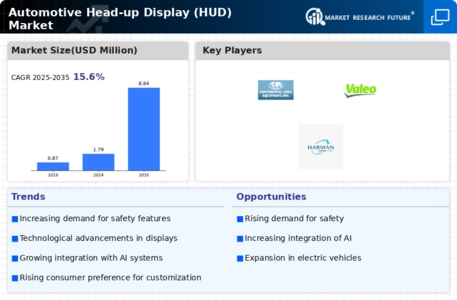

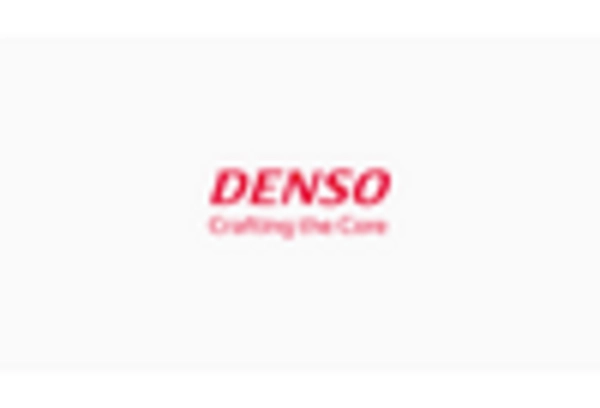
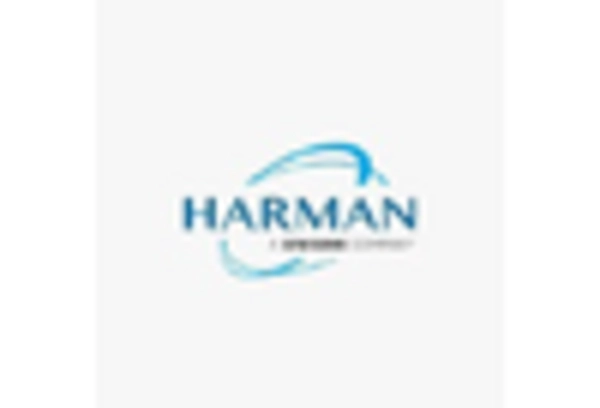
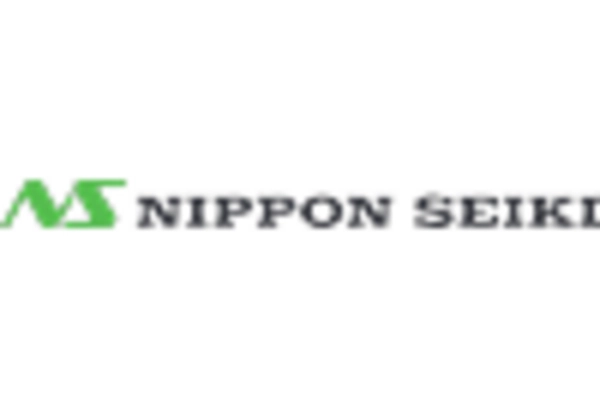
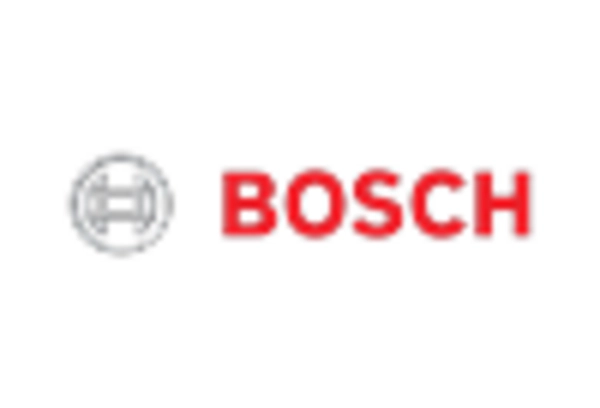










Leave a Comment